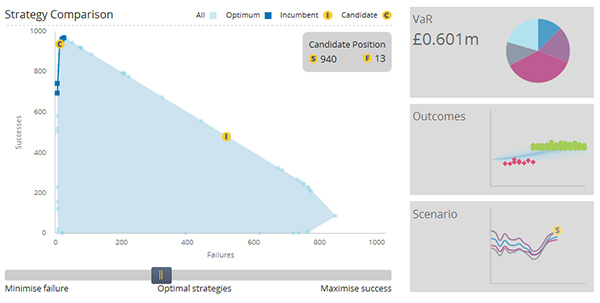From the blog: Equity markets are volatile. This is not news, but reading some of the recent pensions press you could be forgiven for thinking that it was.
Pension schemes should be able to take a long-term view of investments, so short-term volatility in the market should not be a reason to see trustees reprise actor Clive Dunn’s finest hour – bellowing “Don’t panic!” in increasingly hysterical tones.
Provided, that is, schemes have done their homework.
Pension schemes should be able to take a long-term view of investments, so short-term volatility in the market should not be a reason to see trustees reprise actor Clive Dunn’s finest hour – bellowing, "Don’t panic!" in increasingly hysterical tones.
Provided, that is, schemes have done their homework.
Volatile equity markets are just one of the risks trustees of defined benefit schemes face, so it is important they have assessed and understood these risks in an integrated framework.

Trustees should base investment decisions on considered analysis of these wider risks and be wary of knee-jerk responses to short-term market conditions.
It is important trustees take the time to understand what risk means in the context of their own scheme. They should also consider what level of risk they and the sponsor can tolerate.
Software analysis
Historically the tools necessary to analyse the level of risk and volatility within an investment portfolio, and to track changes in the funding position have been the preserve of larger schemes.
More recently, software has become available that has brought such analysis within the reach of most schemes. This allows trustees to more effectively assess the risk in their portfolio and identify an asset mix that better matches their appetite for risk and helps them identify opportunities.
Trustees will then be in a better position to take advantage of those opportunities. In recent years many schemes have capitalised on such developments to diversify and derisk their investment portfolios, meaning they are in better shape to weather the current market volatility.
That is not to say trustees should be complacent, as there is a need to understand the impact of the market volatility on the employer covenant and whether the employer’s appetite for risk has changed.
And for those trustees who have not yet addressed their approach to investment risk in the way suggested above, now is perhaps an opportune time to do so, as there is one thing you can be sure of: there will be more periods of market volatility ahead. And it won’t be news the next time either.
Brian Spence is the founder and director of consultancy Spence & Partners














